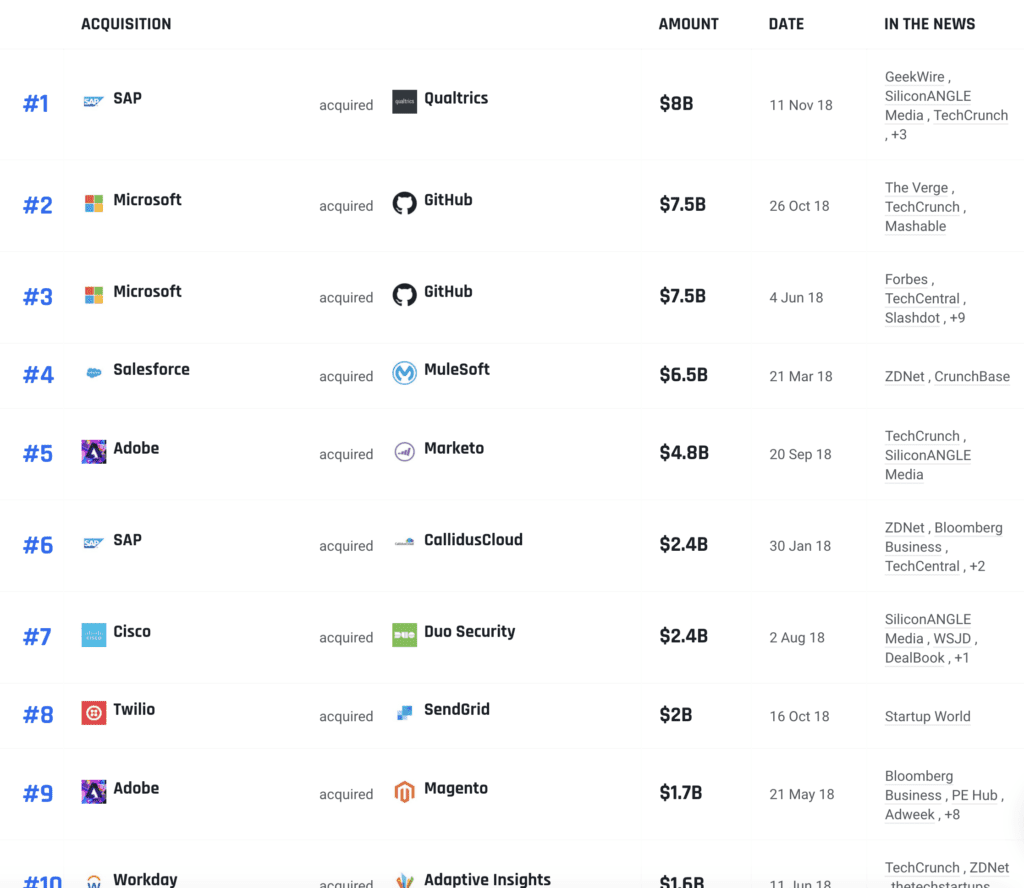There’s been a run of incredible M&A, from Salesforce buying Slack for $27B, to Qualtrics’ $8b acquisition by SAP (and later IPO at $20b+), to Github’s $7.5b exit to Microsoft to Mulesoft to Salesforce for $6.5b to Write to Citrix for $2.2b, Plangrid for almost $1b by Autodesk, and so many other incredible deals. It is breathtaking.
A lot is written about the economics of being acquired, and the deal dynamics. But a bit less is out there on what it is really like as a founder-CEO … after the deal closes.
My top 8 learnings of … What Changes:
- The pressure is partially off. Unless there is a huge earn-out or retention payment tied to performance, the pressure is partially off. Not all of it. But the insane founder-CEO pressure you had … is off. It is replaced with the basic Big Company Pressure of doing the best you can. Take a real vacation. Go to your kid’s mid-week diving competition. Yes, you did this before. But before, you also were checking your email and thinking about work the entire time.
- You don’t have to work as hard. See previous point.
- Some folks will prefer post-acquisition life. And it is hard to predict. I thought my sales team would leave quickly. My VP of Sales and the team stayed for 2.5 years. Most surprisingly, my CTO — the most start-up-ey guy I know — is still there. 7 years later. My learning: don’t worry so much about this. Folks may actually enjoy being part of a BigCo. You just don’t know.
- It’s not yours anymore. It doesn’t matter if the acquirer “leaves you alone” for a while or does a quick integration. It really doesn’t. Because no matter how you are managed, hands-on or hands-off … it isn’t yours anymore.
- You may be asked to own new stuff beyond just what your company / app does. Many times, acquirers will want you to own more than just the company they acquired. E.g., to be the head of all business services, or all web something or other. To solve an organizational hole for them. This can have pros and cons.
- Contingent payments incent — and modify — behavior. Oftentimes, as much as 20% will be held in escrow for claims. If that’s the case, you may spend a lot of time thinking about how to get that 20%, not the business. If you have incentives tied to growth, you’ll focus there. If you have incentives tied to just “resting-and-vesting”, you may be disincented to really do too much stretching. Whatever the incentives are, they will be very different from the ones you had as a CEO / founder. Very different.
- You’ll have to re-learn how to work for someone else. This can be trickier than you might think.
- Your upside is capped. This won’t really matter to you, or most folks, for a while. Probably not even for 2+ years. But eventually, you’ll see that your upside is capped. That can be great for some folks, to see the certainty of what they might make, and where they can grow. But later, eventually, this can be tough for founders. We are used to beating the odds. We are used to taking risk. But we aren’t really used to having our limits, and thus implicitly our dreams, being capped. Even if the caps are more than fair.
Note things are a bit different when you are acquired by a Private Equity firm, like Vista, Thoma Bravo, etc. There, the rough deal is you often sell half your equity now and roll over half into an eventual IPO. (Terms can vary). That can sort of split the difference on the points above.


